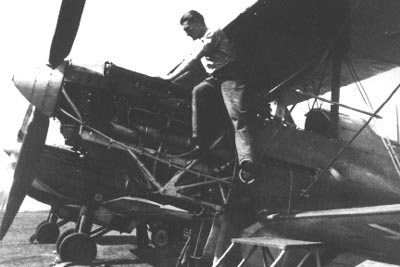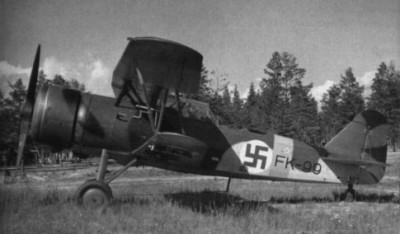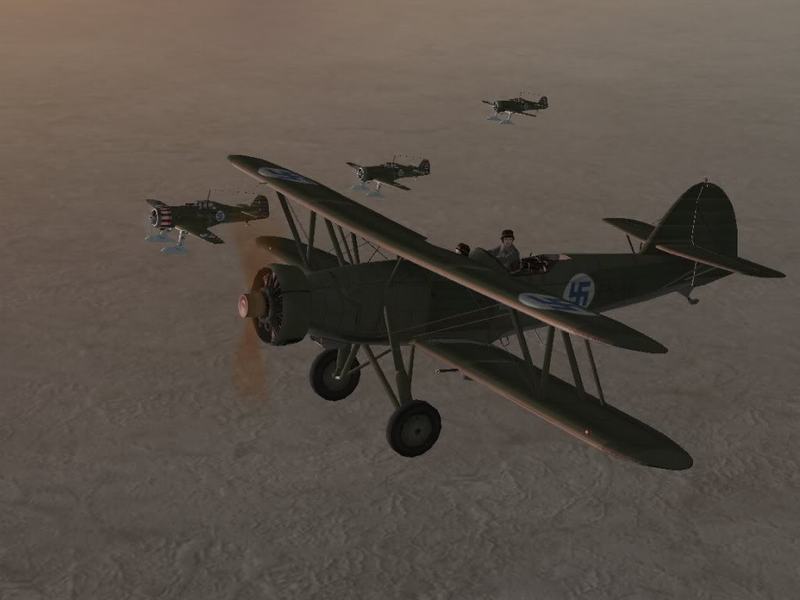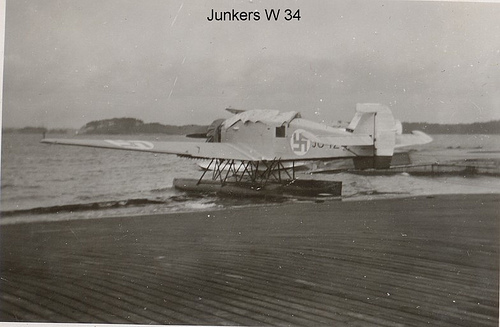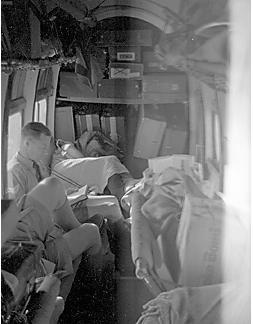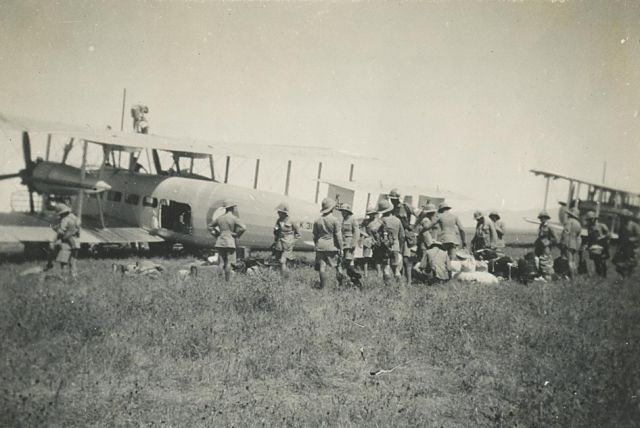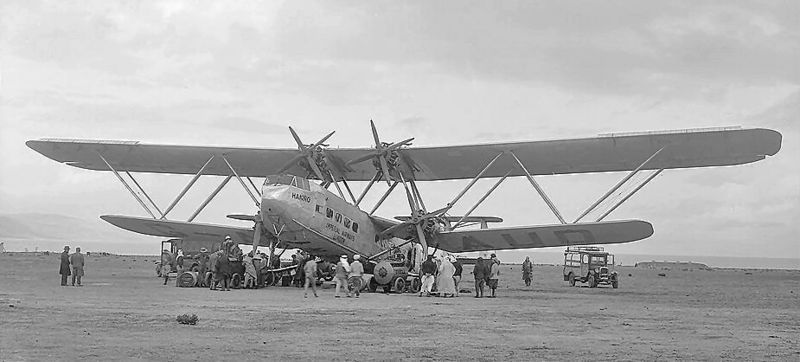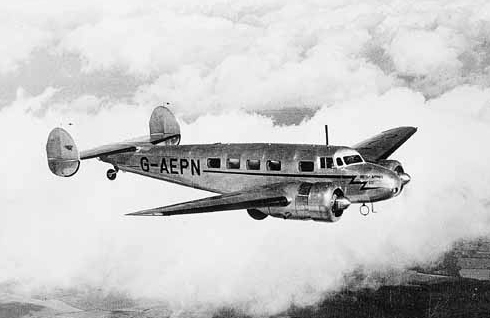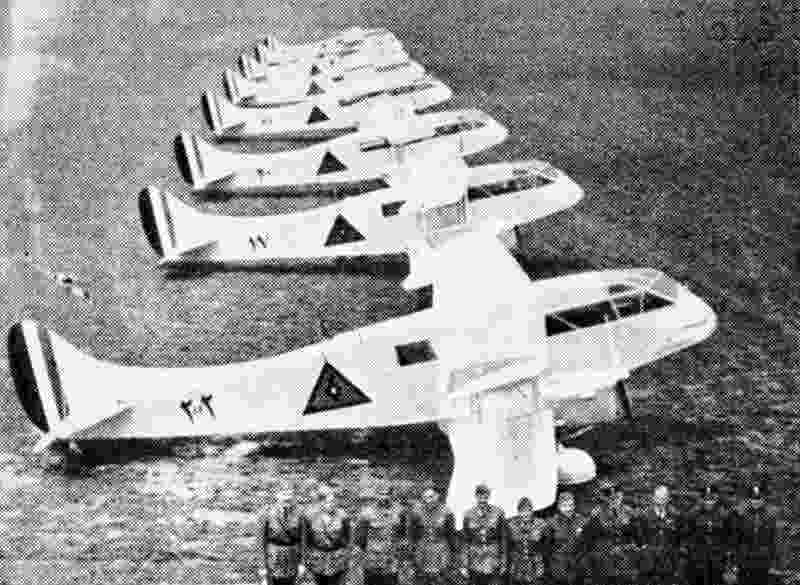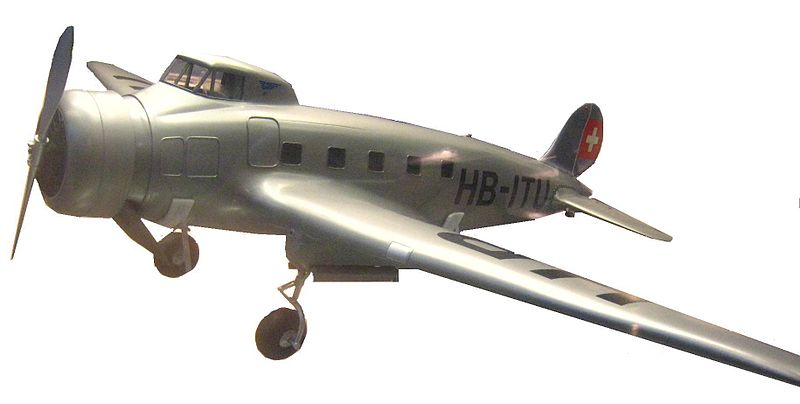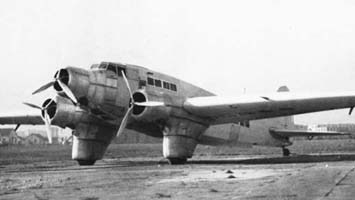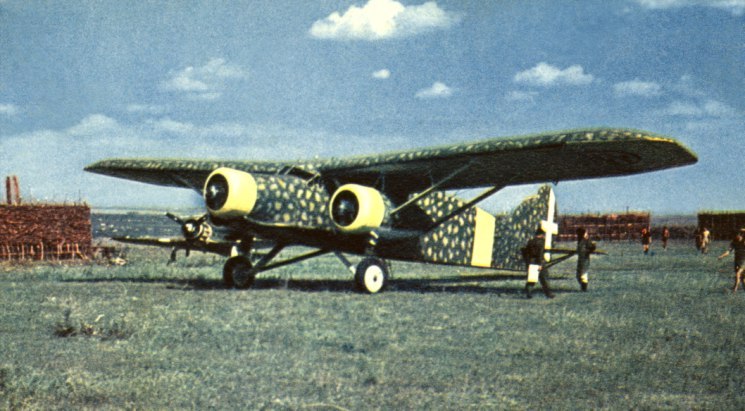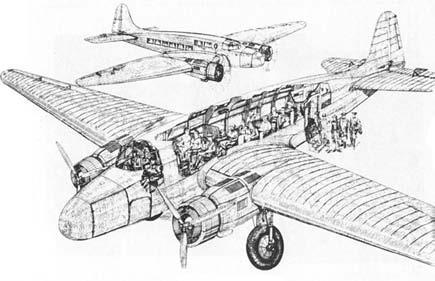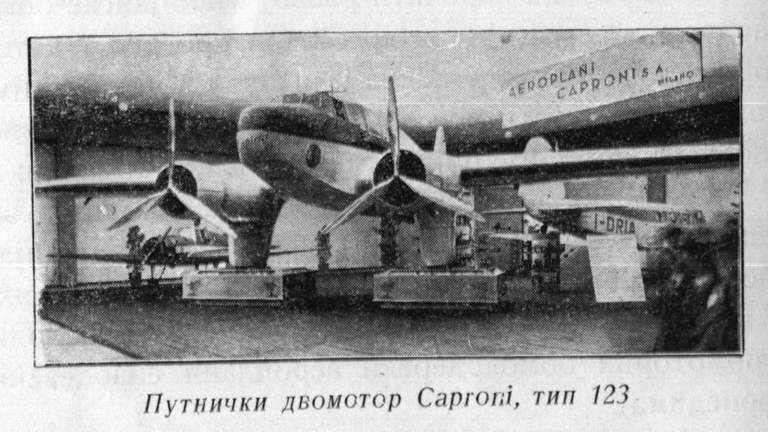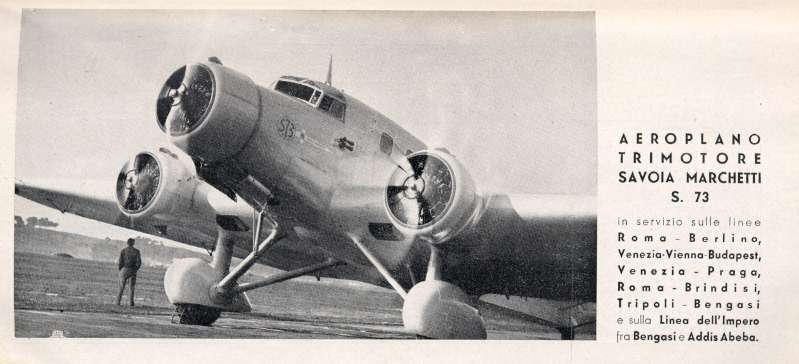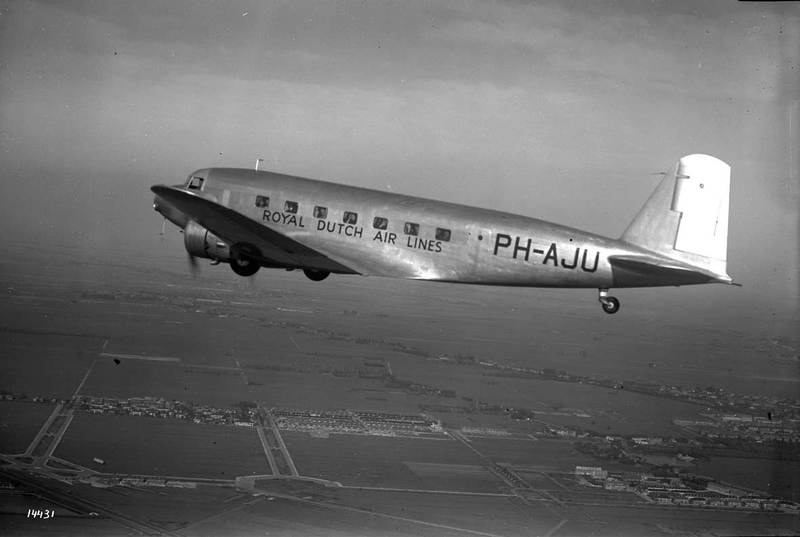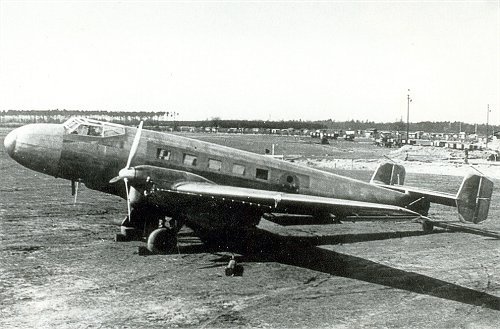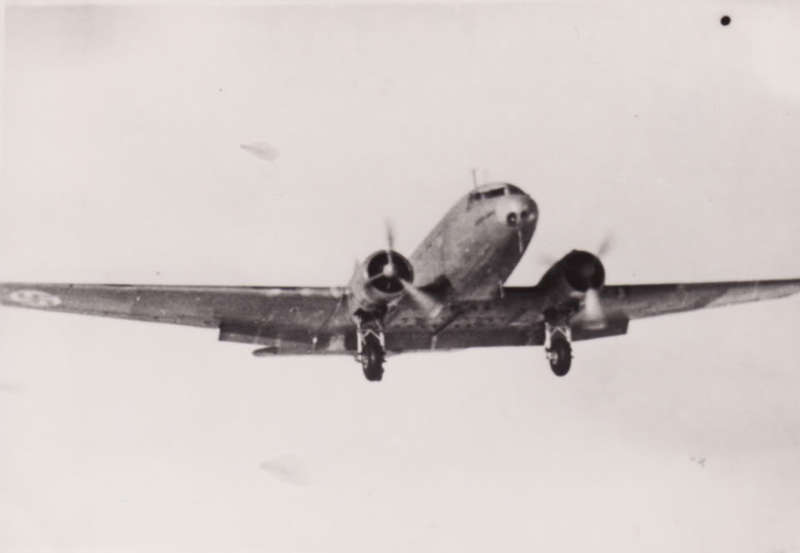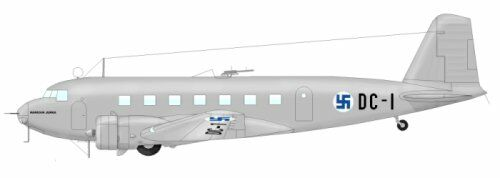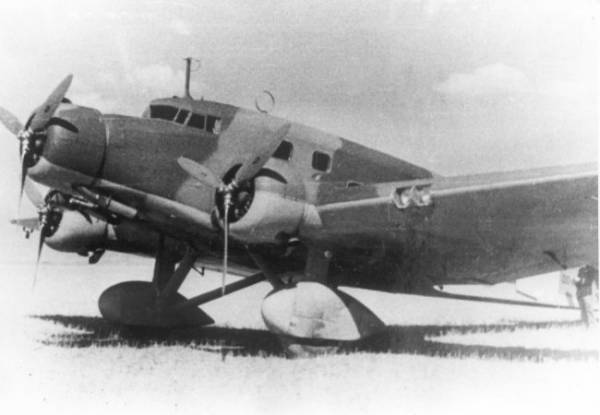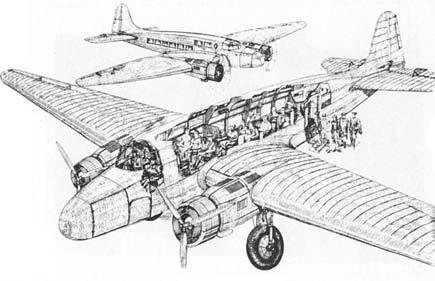As in 1932 and 1933, the Ilmavoimat continued to search for high-performance Fighter aircraft as well as good effective light to medium bombers. Additionally, the 1934 program was to include the purchase of a small number of transport aircraft – the Ilmavoimat had bought 10 Junkers W.34 transport aircraft in 1930 and these had proven useful in flying logistical support into remote areas and in evacuating casualties in exercises.
In 1934 the Procurement Team settled on the Czechoslovakian designed and built Avia B-532 Fighter. The Ilmavoimat had previous experience with Czech aircraft – the Smolik trainers and the Aero Light Bombers – aircraft which had proved reliable and effective. In addition, the Maavoimat had been purchasing weapons from Skoda and the Czechs were a well-known quantity. This was not a leap in the dark but part of an ongoing relationship between the two countries that, while not close, was cooperative, friendly and business-like – and the Avia B-532 Fighter had stood out in a class of its own in the evaluation and test flight program that had been carried out.
In looking at light to medium Bombers, the Fokker C.X was selected and built under license in Finland. The engine used for the Fokker CX was the Finnish-manufactured Bristol Bristol Pegasus XII 850hp nine cylinder radial engines built under license in Finland.
In assessing transport aircraft, the Procurement Team looked at a considerable ange of aircraft, initially with a strong bias towards the Junkers Ju-52 that was already used extensively by Aero Oy. What was wanted was a robust twin-engined aircraft that was reliable, tough, had a good range and could easily be adapted as a floatplane or skiplane. With a wide range of aircraft available, the assessment process too some time, with the short-list consisting of the three-engined Junkers Ju-52, consideration being given to the rather newer Junkers Ju-86 (a 10 passenger civil transport which was still at the design stage) at the request of Junkers, the Boeing Model 247, the Lockheed Model 10 Electra and the de Havilland D.84 Dragon, the de Havilland DH.86, the Handley Page HP.42, the Vickers Valentia, the Douglas DC2, the General Aviation GA-43, the Caprioni Ca132 abd Ca133, the Savoia-Marchetti S.73 and also the designs of the Heinkel He111 transport – all of which were in service or in the prototype or late design stages. The older Junkers W.35 already in service with the Ilmavoimat was also considered.
In the end, with a considerable range of types to evaluate and some promising developments in the pipeline, the evaluation and testing program for a transport aircraft dragged on into 1935 before a decision was made.
Ilmavoimat Avia B-532 Biplane Fighter – 24 ordered in July 1934, 24 ordered in July 1935
By late 1933, the front-line fighter strength of the Ilmavoimat consisted of one squadron of now-obsolete Martinsyde F4 Buzzards, two squadrons of Haukka II Fighters and two squadrons of Bristol Bulldogs – both already beginning to be outclassed by the newer fighters – and a single squadron of Fairey Firefly II Fighters which entered service only in March 1934. The Ilmavoimat’s budget for 1934 and 1935 made provision, among other things, for the acquisition of one additional squadron of modern fighter aircraft in each year and in July 1934, after a series of evaluations and discussions with a number of potential suppliers, the Finnish Defence Ministry placed an order with Avia for 24 Avia B-534 Fighters. These were built in conjunction with the first order placed for these aircraft by the Czechoslovak Ministry of National Defence and were the first aircraft delivered from the initial batch, arriving in Finland in the summer of 1935. At this stage, the aircraft had proven themselves as excellent Fighters and a second order for a further 24 aircraft was placed with these were delivered in March 1936. Both squadrons saw combat in the Winter War and proved to be effective fighters, particularly against the Soviet Polikarpovs.
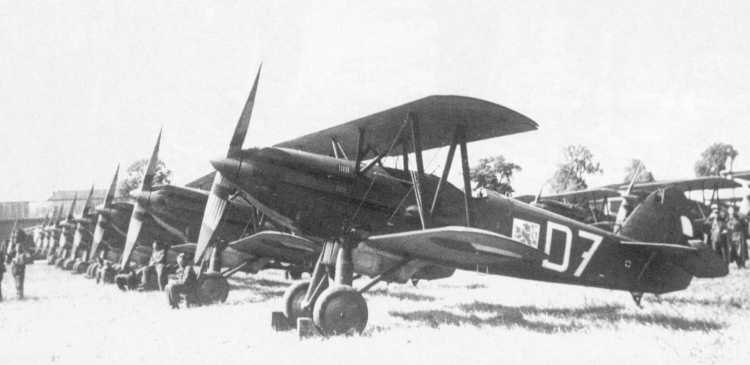
Ilmavoimat Avia B-534 Fighters shortly after delivery – not yet painted in Ilmavoimat colours – this was actually a batch built for the Czechosolvakian Air Force and diverted to fill the Finnish order
The Avia B.534 series of biplane fighters was at the time a highly regarded (though now often forgotten) aircraft. Some reports make it the best aircraft of its category during its early run in the mid-1930s. Such was the performance of the machine that the German Luftwaffe would briefly setup a fighter squadron utilizing captured B.534 aircraft after the annexation of the Czechs. Simply put, the Avia B.534 can be thought of as a melding of two ages in aviation history. The B.534 featured a fixed undercarriage and a biplane wing assembly but under that outdated facade were four 7.92mm synchronized machine guns located in the sides of the fuselage and firing through the propeller, a powerful 850 horsepower license-built Hispano-Suiza liquid cooled V12 inline engine capable of 245 miles per hour and the ability for the aircraft to also carry six 44lb bombs. The B-534’s combination of speed, handling and firepower was highly respected. Fuselage construction was a unique mix of fabric-covered steel-structured wing assemblies while the fuselage as a whole was highly aerodynamic in nature, complete with an enclosed cockpit (the operational flight ceiling of 34,800 feet necessitated this feature). The B-534 had a range of 360 miles. In 1935 the Avia B-534 was well ahead of its contemporaries. Britain was still dependent on Hawker Furies, with the first Gloster Gladiators being produced at this time. The Soviet Union was placing its hopes on its Polikarpov aircraft designs. The United States was still using descendants of the Curtiss Hawk series, with the Seversky P-35 and Curtiss P-36 prototypes just about to fly.
The manufacturer, Avia, was a Czech company, founded by Miroslav Hajn and Pavel Beneš in 1919 and became part of Škoda in 1928. During the 1930s the factory became the biggest aircraft producer in Czechoslovakia. The B-534 prototype flew on 25 May 1933. It was first displayed to the public on 10 September 1933 at an Army air day, five days after the first flight of the second prototype. More work followed and the first order for 147 aircraft for the Czechoslovakian Air Force was placed by the Czechoslovak Ministry of National Defence to the Avia Company on 17 July 1934. These were delivered in the autumn of 1935. The Czechoslovak Ministry of National Defence ordered the procurement of a second batch of 46 B-534’s in 1936, receiving these in March and April 1937. In 1936 a third order for 134 aircraft was placed. Owing to the growing German menace a fourth contract was almost immediately thereafter placed for a further 50 machines. A fifth procurement order was placed in August 1938 for 68 machines, bringing the overall total ordered by the Czechoslovak Air Force to 445. It can be seen then, that Avia was well-able to produce large numbers of these aircraft in a short timeframe.
The abrupt partition of Czechoslovakia in 1939 prevented the use of the B-534 in combat by the nation that had produced it. By then, high performance monoplanes such as the German Messerschmitt Bf 109, Hawker Hurricane and Supermarine Spitfire were in service. The B-534 was first used in combat by the Slovak Air Force. Slovakia had acquired some 80 B-534s and Bk-534s from the Czech Air Force and used them against Hungary during the border war of 1939. Later, two squadrons of B-534s assisted the German Luftwaffe during the Invasion of Poland in September 1939 (The same squadrons served with the Germans in the Ukraine during the summer of 1941, with one squadron returning in 1942 for anti-partisan duty).
The two squadrons of Ilmavoimat Avia B-534’s saw service in the Winter War – in 1939 the engines were replaced with the latest Finnish-manufactured Hispano-Suiza 12Y (with the work being rushed through urgently as the threat of war loomed ever larger) which had given them another 30mph, bringing their performance up to 275mph which, with their manouverability, meant that they fought through the Winter War as an effective second-line fighter, more or less on a par with the Fokker D.XXIs which the Ilmavoimat had purchased in 1936. The B-534’s fought on for the duration of the Winter War and, like many of the Ilamvoimat’s older aircraft were only phased out in 1944 as they were superceded by large numbers of modern aircraft from Britain and the United States.
Ilmavoimat Fokker C.X Biplane Scout and Light Bomber – ordered 1934
In looking for further bombers, the Ilmavoimat initially considered simply buying more Hawker Harts. However, even with the Hawker Hart’s excellent performance, aircraft technology was moving ahead rapidly, with advances occurring on an ongoing basis and in the end, the Ilmavoimat procurement team opted for the Fokker C.X. Four C.X’s were purchased as “pattern” aircraft along with a manufacturing license and the Ilmavoimat ordered a further 20 from VL, who started building the C.X in the last half of 1934. These were equipped with Bristol Pegasus XII 850hp nine cylinder radial engines built under license in Finland and were delivered in mid-1935. A further 20 were built through 1935 and early 1936 but with the move of VL to Tampere and the startup of Fokker D.XXI and Bristol Blenheim manufacturing, production was discontinued as the emphasis was placed on the construction of more modern aircraft. However, the C.X was kept in service and used in its intended role as a scout and light bomber in the Winter War, but post-Winter War was relegated to the training and target-towing role.
The Fokker C.X was a biplane scout and light bomber designed in 1933. It had a crew of two (a pilot and an observer). It was originally designed for the Royal Dutch East Indies Army, and, like all Fokker aircraft of that period, it was of mixed construction, with wooden wings and a welded frame covered with aluminium plates at the front of the aircraft and with linen at the back. The prototype was built in 1934 with a Rolls-Royce Kestrel V engine. The Ilmavoimat Fokker C.X had a maximum speed of 211mph, a range of 522 miles and a service ceiling of 27,230 feet.
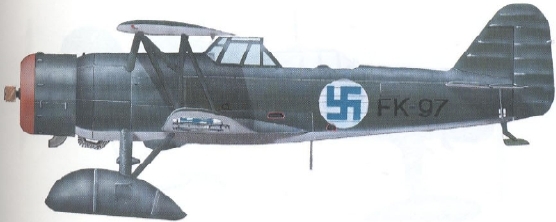
The Ilmavoimat Fokker C.X had a maximum speed of 211mph, a range of 522 miles and a service ceiling of 27,230 feet.
Armament consisted of 2x 7.9mm machine guns fixed on top of the front fuselage and a third manually aimed from rear cockpit. Underwing racks for two 385lb (175kg) or four 221lb (100kg) bombs were fitted. During the German attack on the Netherlands in May 1940, the C.Xs served in the Netherlands Air Force in their intended role as scouts and light bombers. They were far too slow to compete with German aircraft such as the Messerschmitt Bf 109, but the tactic of hu-bo-be (huisje-boompje-beestje), Dutch for “house-tree-animal” or “hugging the ground”, allowed the C.Xs to achieve some measure of success.
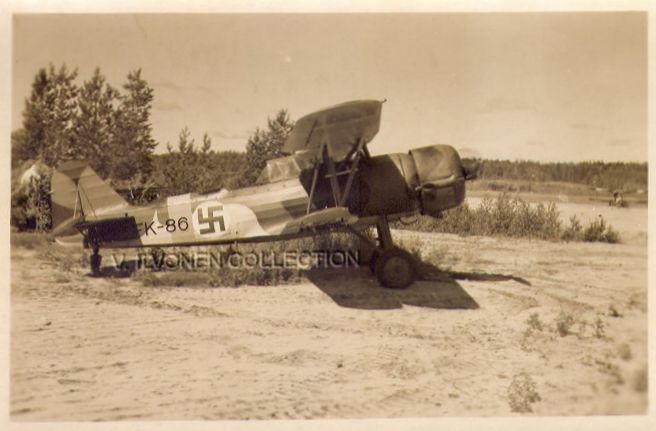
3/Lentolaivue 16:n Fokker C.X Äänislinnassa kesällä 1940 /. 3/Lentolaivue 16 – Fokker C.X at Äänislinna in the summer of 1940
Transport Aircraft Evaluation and Assessment through 1934
Junkers W.34 or J.52
The earlier Junkers W.34 transport aircraft purchased in 1930 had proved very useful in support for the Maavoimat and, as mentioned, the 1934 Procurement Program made provision for the purchase of additional transport aircraft. Immediate consideration was given to purchasing further Junkers W.34’s, or the Junkers 52, which was already in service with Aero Oy.
However, the Procurement Team also looked at other transport aircraft available and decided that the scope of evaluation and testing should be broadened given the new aircraft coming onto the market and either already available or with prototypes being tested or in development. In essence, over 1934 as aircraft were evaluated and test-flow, the specification on what the Ilmavoimat wanted evolved into a requirement for a robust twin-engined aircraft that was reliable, tough, had a good range with a reasonable carrying capacity (set at approx. 16 soldiers) and could easily be adapted as a floatplane or skiplane.
The ability to operate in all Finnish weather conditions and to be able to takeoff and land on wheels, skis or floats had been a criteria set from the start, eliminating from consideration the range of seaplanes used by many of the commercial operators of the time. The first aircraft that were looked at, early in the year, were a series of older transport aircraft that were almost immediately eliminated from consideration.
These included the now rather dated Vickers Valentia and the Handley Page HP42 as well as the Junkers W.34 (of which the Ilmavoimat had 10 in service – this was a single-engined aircraft with a maxium speed of 165mph, a range of 487 miles and able to carry only 6-8 passengers). The W.34 was a useful smaller aircraft, but the Ilmavoimat was at this stage looking for something larger and with a longer range.
The Vickers Valentia
The Vickers Valentia was considered, and having been introduced in 1934 it was relatively new, but the design, based as it was on the earlier Vickers Victoria, was an older biplane design. The Valentia was essentially a Victoria with a strengthened airframe and with the more powerful Bristol Pegasus engines replacing the old and now obsolete Napier Lion engines. The RAF ordered 28 new-build Valentia’s and a further 54 were converted from the old Victorias. Within the RAF, the Valentia’s were used extensively for transport operations in the Middle East and were also, incidentially, used for early experiments in aerial refuelling by Alan Cobham. With a crew of 2, a maximum speed of 130 mph (cruising speed of 117mph) and a range of 800 miles, they could carry 22 troops. They could also carry 2,200lbs of bombs on underwing racks in a bomber role.
While the Vickers Valentia was considered, the Ilmavoimat team considered the design antiquated in light of aircraft such as the Junkers Ju52, the new Boeing Model 247 and the Italian Caprioni Ca132. An evaluation was carried out, but it was considered unlikely that the aircraft could successfully operate from floats or skis and it was therefore eliminated from consideration early on, as was the Handley Page HP42. However, the Ilmavoimat were extremely interested in the aerial refuelling experiments being carried out by Alan Cobham (this came up in the Vickers sales pitch) and this interest was followed up on, the result of which was that Vickers Valentia’s would indeed fly for the Ilmavoimat (something that will be covered in another post).
The Handley Page HP42
The Handley Page HP42 was a British 4-engined long range biplane airliner designed in 1928 and introduced in 1931. At the time theIlmavoimat looked at the aircraft, all the in-service planes were in civilian use, operated by Imperial Airlines. With a crew of 4, a speed of 120 mph (cruise speed of 100mph) and a range of 500 miles), it carried 24 passengers. Again, an evaluation was carried out, but as with the Valentia, it was considered unlikely that the aircraft could successfully operate from floats or skis and it was therefore eliminated from consideration.
The Procurement Team was familiar with the Junkers Ju52 – this was already in service with Aero Oy as a commercial airliner in Finland and with the Valentia and HP.42 eliminated from consideration, was at the top of the list as further aircraft began to be evaluated. These next evaluations included a series of transport aircraft that were coming into service in 1934 or for which prototypes were available. In mid-1934, the aircraft being considered included the Boeing Model 247, the Lockheed Model 10 Electra, the de Havilland D.84 Dragon, the Douglas DC2, the General Aviation GA-43, the Caprioni Ca132 and Ca133 and the Savoia-Marchetti S.73
The Junkers Ju52
The Junkers Ju 52 was a German transport aircraft manufactured from 1932 to 1945. It saw both civilian and military service during the 1930s and 1940s. In a civilian role, it flew with over 12 air carriers including Finland’s Aero Oy as an airliner and freight hauler. In a military role, it flew as a troop and cargo transport. The Ju 52 was similar to the company’s previous Junkers W33/W34, although larger. Powered by three BMW engines, it had a maximum speed of 168mph, a cruising speed of 138 mph and a range of 590 miles with a Crew of 2 and 17 passengers. Aero Oy had already proven the aircraft was suitable for operations in Finnish conditions, operating the aircraft using floats and skis.
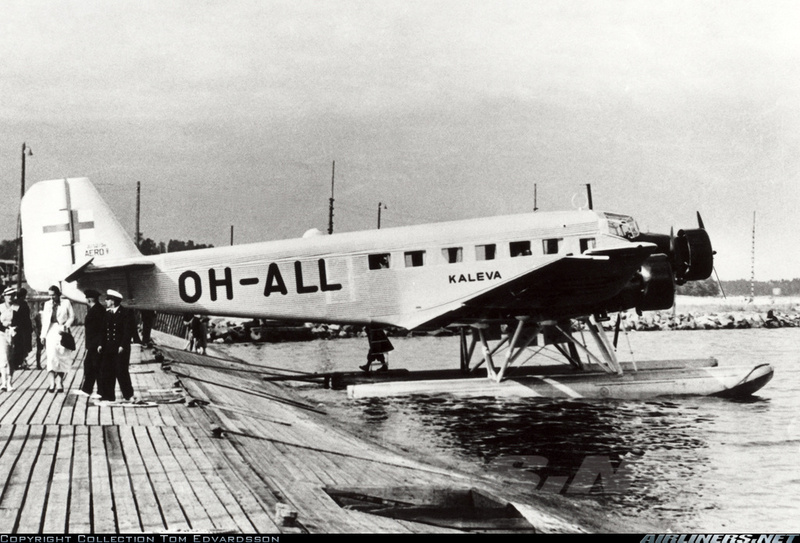
A photo we’ve already seen – an Aero Oy Junkers Ju-52 Floatplane “Kaleva”: Photo taken at Katajannokka, Helsinki, 1936
The Boeing Model 247
Ordered off the drawing board”, the Boeing 247 first flew on February 8, 1933 and entered service later that year. Subsequently, development in airliner design saw engines and airframes becoming larger and four-engine designs emerged, but no significant changes to this basic formula appeared until cabin pressurization and high altitude flight were introduced in the early 1940s. When first built, the Boeing 247 was faster than most fighter aircraft of the day and in addition, it was the first twin-engine passenger transport able to fly on one engine.
Air carriers considered its limited capacity a drawback since it only carried 10 passengers, in five rows with a seat on each side of the aisle, as well as a flight attendant. Compared to the more capacious DC-2 and later DC-3, the passenger count was too few to make it a commercially viable airliner. At a unit cost of USD$65,000 and seventy-five 247s were built; by contrast, Douglas collected 800 civil orders for DC-3s before the Pearl Harbor attack. Powered by two Pratt & Whitney S1H1-G Wasp radial engine, 550 hp (410 kW) each, the Boeing 247 had a crusing speed of 188 mph, a maximum speed of 200mph, a range of 745 miles and with a crew of 3, could carry 10 passengers.
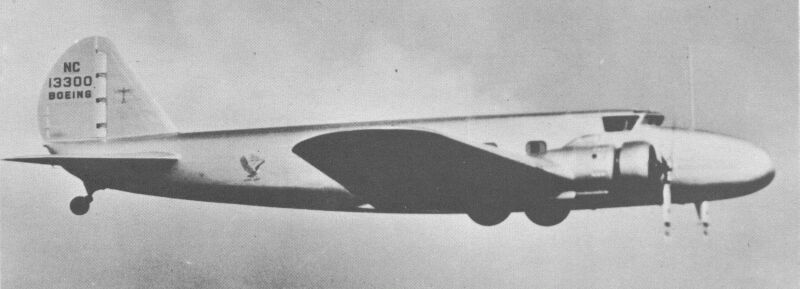
The Boeing Model 247 was an early US passenger aircraft, considered the first such aircraft to fully incorporate advances such as all-metal (anodized aluminum) semi-monocoque construction, a fully cantilevered wing and retractable landing gear. Other advanced features included control surface trim tabs, an autopilot and deicing boots for the wings and tailplane.
The Ilmavoimat Procurement Team evaluated and test flew the Boeing Model 247 but while the speed and range were considered excellent, its carrying capacity was too small, particularly in comparison to the Junkers Ju52 and it was thus eliminated from the short list.
The Lockheed Model 10 Electra
The Electra was Lockheed’s first all-metal and twin-engine design by Hall Hibbard and developed by the Lockheed Aircraft Corporation in the 1930s to compete with the Boeing 247 and Douglas DC-2. The prototype made its first flight on February 23,1934. Wind tunnel work on the Electra was undertaken at the University of Michigan with much of the work performed by a student assistant, Clarence “Kelly” Johnson. He suggested two changes to the design: changing the single tail to double tails (later a Lockheed trademark), and deleting oversized wing fillets. Both of these suggestions were incorporated into the production aircraft.
After October 1934 when the US government banned single-engined aircraft for use in carrying passengers or in night flying, Lockheed was perfectly placed in the market with their new Model 10 Electra. In addition to deliveries to US based airlines, several European operators added Electras to their prewar fleets. Besides airline orders, a number of non-commercial civil operators also purchased the new Model 10.
While the aircraft was still at the protoype stage in 1934 (production began in 1935) the design was evaluated but as with the Boeing Model 247, while the maximum speed of 202mph and the ramge of 713 miles were considered excellent, the carrying capacity of 2 crew and 10 passengers was considered too small. The Model 10 Electra was thus also eliminated from consideration.
The de Havilland D.84 Dragon
The de Havilland DH.84 Dragon 2 was a successful small commercial aircraft designed and built by the de Havilland company that entered service in April 1933. The twin-engined aircraft was a a simple, light biplane design with a plywood box fuselage with a maximum speed of 133mph, a crusing speed of 109mph, a range of 545 miles and a sewrvice ceiling of 12,500 feet. With a crew of one, it carried 6-10 passengers. A military transport version was available as the DH84M Dragon and this was evaluated by the Ilmavoimat Procurement Procurement Team. While the Dragon was very attractive as a short-haul low capacity airliner, the evaluation team considered it too small and with insufficient cargo / troop transport capacity for the Ilmavoimat’s needs.
The General Aviation GA-43
The General Aviation GA-43 was an airliner produced in small numbers in the United States in the mid 1930s The prototype was developed and built by Fairchild’s American Pilgrim division, but the programme was taken over by General Aviation when the firm purchased American Pilgrim shortly before it had flown. Although this first flight took place in 1932, manufacture did not commence until 1934, by which time General Motors had, in turn, gained a controlling interest in North American Aviation and merged it with General Aviation that they already owned.The upshot of this was that the GA-43 became the first aircraft produced by North American.
The GA-43 was a conventional low-wing cantilever monoplane of all-metal construction. The prototype had fixed tailwheel undercarriage, but the main units of this were later changed to be made retractable, and three of the four production examples also had retractable mainwheels, the fourth aircraft having twin pontoons instead. The oval-section fuselage contained a ten-seat passenger cabin, and the cockpit (with 2 crew) was located atop the fuselage under a separate canopy. The GA-43 was single-engined, with a maximum speed of 195mph and a range of 425 miles. Swissair purchased two aircraft.
The Ilmavoimat evaluation team considered the GA-43 too small and with insufficient cargo / troop transport capacity for the Ilmavoimat’s needs. The single engine was also seen as undesirable and while the speed was good, the maxium range was also limited. The GA-43 was not seen as worth additional evaluation and testing.
The Caproni Ca132 and Ca133
Caproni was a firm with a lengthy history in the aviation industry, having started building aircraft in 1908. During WW1 Caproni was, along with FIAT, one of the most important aircraft manufacturers in Italy. After the war, they converted a number of their bomber designs to civilian passenger aircraft. By the late 1920s they were building smaller (but far more successful in terms of sales) passenger aircraft and coming up with some good designs (such as the Caproni CA 123 – thought to be a “copy” of the American DC2). The Ca 132 was a smaller version of the CA 123 and was a prototype for the larger aircraft built in Italy in 1934, intended for use as either a bomber or airliner. It was a conventional low-wing cantilever monoplane powered by radial engines on each wing and in the nose. The main undercarriage was housed within large streamlined spats. Configured as an airliner, it would have seated 20 passengers together with a crew of 4 and was again designed to compete with the Douglas DC2. Powered by 3 Piaggio Stella IX engines of 418 kW (560 hp) each, the Ca.132 had a maximum speed of 196 mph.
The Ca 133 was a high wing monoplane powered by three 460hp Piaggio Stella P.VII C.16 radial engines. the aircraft was of welded steel-tube construction and fabric-covered except for the forward fuselage, which had sheet metal skin. The wheels were fitted in large spats and there was a steerable tail wheel. The prototype first flew in December 1934 and production began in 1934 for both civil and military use. While the military version could carry 18 fully equipped soldiers, the civilian version had a cabin for sixteen passengers and saw service with the Italian airline Ala Littoria SA, which used a fleet of thirteen aircraft.
The aircraft were mainly operated on the African routes and it is known that they have flown on the line Rome – Benghazi – Caïro – Wadi Halfa – Khartoum – Asmara – Addis Ababa and in East Africa including Asmara – Assab – Diredawa, Diredawa – Gorrohei – Belet’Ven – Mogadiscio, Asmara – Assab – Djibouti and Addis Ababa – Diredawa – Djibouti. They operated these services until 1939 and only one was recorded as lost: In this time, the aircraft carried 10,000 passengers and operated with a regularity of 99.9 %. The Ca 133 was operated in large numbers by the Regia Aeronautica. It was a robust and inexpensive aircraft, designed to be easily maintained in difficult conditions and economical to operate.
The Caproni Ca 123
The Caproni Ca 123 was based on the Ca 122 bomber and was thought to be a “copy” of the Douglas DC2. The all-metal aircraft was constructed to carry a crew of three (pilot, co-pilot and radio operator) and 28 passengers over long distances. The aircraft was to be powered by two Gnome & Rhone 14Krs (65okW/870hp) engines with three bladed propellors. It was also designed with retractable landing gear. Maximum speed was 211mph with a range of 932 miles.
The Savoia-Marchetti S.73
The Savoia-Marchetti S.73 was an Italian three-engined airliner that first flew as a prototype on 4 July 1934 (the aircraft entered service in March 1935 with a production run of 48 aircraft). The aircraft was developed in only four months in parallel with a bomber version (the SM.81) thanks to the use of the S.55 wing, combined with a much more conventional mixed-construction fuselage (a skeleton of steel covered by wood and fabric for the fuselage, wood for the three-spar wing).
The S.73 was a low-wing monoplane with a braced tailplane and fixed undercarriage. The pilot and co-pilot were seated side-by-side in an enclosed cockpit, with a compartment for a radio operator and a mechanic (for a total of 4 crew). A passenger compartment could house 18 passengers in two rows. The prototype had French Gnome et Rhône Mistral Kfr engines, but further aircraft were fitted with Piaggio P.X Stella 522 kW (700 hp), Wright R-1820 574 kW (770 hp), Walter Pegasus III MR2V 544 kW (730 hp) and Alfa Romeo AR 125 and 126 engines. Fitted with the Wright R-1820 engines (1,723 kW / 2,310 hp in total), the SM.73 could fly at a maximum speed of 210 mph or cruise at 170mph, had a range of 620 miles and a ceiling of 20,670 feet.
In Ilmavoimat Procurement Team test flights carried out in late September 1934, the SM.73 proved to be easy to fly with reliable controls and handling, well able to fly from short airfields and from airfields with bad terrain conditions, easy to operate on the ground and to maintain and not too costly, particularly when compared to American and German aircraft. Conversion to operate using floats or skis was a relatively straightforward operation, similar to the Junkers Ju52. The mixed construction and fixed landing gear were not seen as major shortcomings at the time of the evaluation.
The Douglas DC2
The Douglas DC-2 was a 14 seat, all-metal structured twin-engine cantilever low-wing transport aircraft produced by the Douglas Aircraft Corporation starting in 1934. In the early 1930s, fears about the safety of wooden aircraft structures (responsible for the crash of a Fokker Trimotor) compelled the American aviation industry to develop all-metal types. With United Airlines having a monopoly on the Boeing 247, rival Transcontinental and Western Air issued a specification for an all-metal trimotor. The response of the Douglas Aircraft Company was more radical. When it flew on July 1, 1933, the prototype DC-1 had a highly robust tapered wing, a retractable undercarriage, and only two 690 hp (515 kW) Wright radial engines driving variable-pitch propellers. It seated 12 passengers.
TWA accepted the basic design and ordered 20, with more powerful engines and seating for 14 passengers, as DC-2s. The design impressed a number of American and European airlines and further orders followed. Those for European customers KLM Royal Dutch Airlines, LOT, Swissair, CLS and LAPE were assembled by Fokker in the Netherlands. 156 DC-2s were built. Although overshadowed by its ubiquitous successor, it was the DC-2 which first showed that passenger air travel could be comfortable, safe and reliable. As a token of this, KLM entered their first DC-2 PH-AJU Uiver (Stork) in the October 1934 MacRobertson Air Race between London and Melbourne.
Out of the 20 entrants, it finished second behind only the purpose built de Havilland DH.88 racer Grosvenor House. During the total journey time of 90 h 13 min, it was in the air for 81 h 10 min, and won the handicap section of the race. (The DH.88 finished first in the handicap section, but the crew was by regulation allowed to claim only one victory). As with other prospective buyers, the Ilmavoimat evaluation and testing team were highly impressed with the DC2 and towards the end of the evaluation and testing program, the DC2 was at or near the front of the pack on almost everything except price.
As evaluations were carried out, the Procurement Team also found themselves on the receiving end of requests to also include for consideration aircraft that were currently being designed and were close to having a prototype built. These included the Junkers Ju-86 (a 10 passenger civil transport which was still at the design stage), the de Havilland DH.86 and also the newly-designed Heinkel He111 transport. These all looked promising and as a result, the evaluation and testing program dragged on into 1935 before a decision was made.
The Junkers Ju86
At the end of 1933, the the Reichsluftfahrtministerium (RLM) was looking for a twin-engined bomber aircraft while Lufthansa was looking for a modern quick passenger aircraft with two engines. On November, 4th 1934 the Ju86 bomber prototype was first flown and on March 22nd 1935 the second prototype (c/n 4902) was ready for its first flight. This second prototype was the civil passenger airliner version of the Ju86. However, at the time of the Ilmavoimat Procurement Team’s evaluation, this aircraft was drawing-board only and was eliminated from consideration as what was wanted was an aircraft that could be test-flown before a decision was made. The Koolhoven debacle of the late 1920’s had cured the Ilmavoimat of any tendancy to buy “on spec”. While the design was evaluated, as with the American Boeing Model 247 and Lockheed Electra the carrying capacity of 2 crew and 10 passengers was considered too small. However, the maximum speed of 260mph and the range of 980 miles were considered excellent and further consideration would be given to this aircraft once a prototype was available.
The de Havilland DH.86 and DH.89
Two de Havilland aircraft were considered – the four-engined DH.86 and the twin-engined DH.89. After the initial assessments and test flights, both were removed from consideration.
The de Havilland DH.86 Express was a four-engined passenger aircraft from the 1930s manufactured by the de Havilland Aircraft Company. During 1933, talks between the governments of United Kingdom, India, Malaya, the Straits Settlements and Australia resulted in an agreement to establish an Empire Air Mail Service. The Australian Government called for tenders on 22 September 1933 for the Singapore-Australia legs of the route, continuing as far south as Tasmania. On the following day Qantas, anticipating success in contracting for the Singapore-Brisbane leg, placed an order with de Havilland for an as-yet non-existent aircraft to be designated the de Havilland 86, the prototype to fly by the end of January 1934. This order was soon followed by one from Holyman’s Airways of Launceston, Tasmania to operate the Bass Strait leg of the service. The D.H.86 was initially styled the Express or Express Air Liner although the name was soon discontinued.
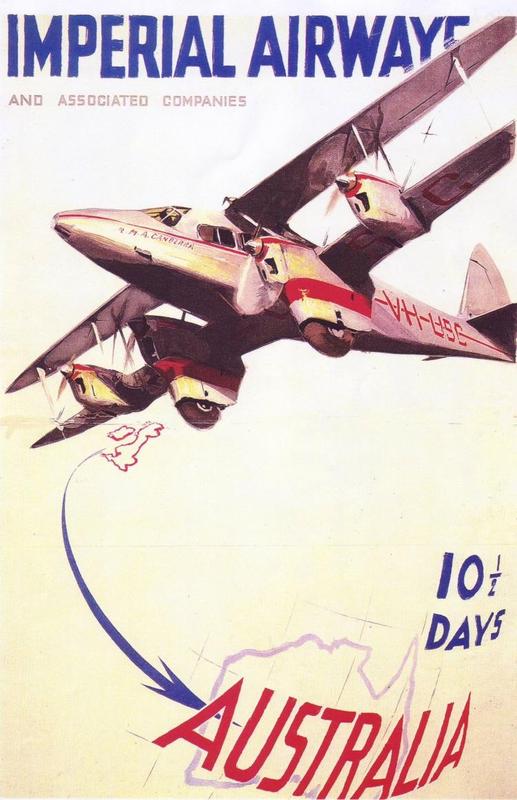
The DH.86 carried a crew of 2 and 10 passengers at a maximums peed of 166 mph. With a range of 748 miles and a service ceiling of 17,400 feet, it didn’t compare well with the Italian and American passenger aircraft. As a result, it was removed from consideration.
The D.H.86 was conceptually a four-engined enlargement of the successful de Havilland Dragon, but with a more streamlined appearance with tapered wings and extensive use of metal fairings around struts and undercarriage. The most powerful engine made by de Havilland, the new 200 hp (149 kW) Gipsy Six, was selected. For long-range work the aircraft was to carry a single pilot in the streamlined nose, with a wireless operator behind. Maximum seating for ten passengers was provided in the long-range type, however the shorter-range Holyman aircraft were fitted with twelve seats.
The prototype D.H.86 first flew on 14 January 1934, but the Qantas representative Lester Brain immediately rejected the single pilot layout because he anticipated pilot fatigue over long stretches, and the fuselage was promptly redesigned with a dual-pilot nose. Only four examples of the single-pilot D.H.86 were built, and of these the prototype was rebuilt as the dual-pilot prototype. When she entered service in October 1934 the first production aircraft, Holymans’ single-pilot D.H.86 Miss Hobart, was the fastest British-built passenger aircraft operating anywhere in the world. Despite de Havilland’s predictions to the contrary, the dual pilot type with its lengthened nose proved to be even faster. However, on 19 October 1934 Holyman’s VH-URN Miss Hobart was lost in Bass Strait with no survivors.At the time Miss Hobart disappeared the design of the aircraft was not suspect, and it was thought that an accident may had occurred when Captain Jenkins and the wireless operator/assistant pilot Victor Holyman (one of the proprietors of Holyman Airways) were swapping seats in mid flight.
However following the loss of Qantas’ VH-USG near Longreach four weeks later while on its delivery flight, it was found that the fin bias mechanisms of the crashed aircraft and at least one other were faulty, although it is doubtful that this had any direct bearing on the accidents other than perhaps adding to the aircraft’s lack of inherent stability. Further investigation revealed that VH-USG had been loaded with a spare engine in the rear of the cabin, and that one of the crew members was in the lavatory in the extreme aft of the cabin when control was lost. It was theorised that the aft centre of gravity condition that thus existed resulted in a loss-of-control at an altitude insufficient for recovery (the aircraft was at an estimated height of 1,000 ft (300 m) prior to the crash).
In fact, the D.H.86 had approached the limits to which traditional “plywood and canvas” aircraft construction could be taken, and was obsolete compared to all-aluminium stressed-skin aircraft like the Boeing 247 and the Douglas DC-1 that were already flying before it was even designed (and the immortal Douglas DC-3 had its first flight just four days after the forced-landing of VH-USW). Under pressure from Holymans and other companies, the Australian Government rescinded its ban on the import of American aircraft during 1936, and for the next 25 years most large commercial aircraft imported into Australia were of American manufacture.
The de Havilland DH.89 Dragon Rapide was a British short-haul passenger airliner of the 1930s. Designed by the de Havilland company in late 1933 as a faster and more comfortable successor to the DH.84 Dragon, it was in effect a twin-engined, scaled-down version of the four-engined DH.86 Express. It shared many common features with the larger aircraft including its tapered wings, streamlined fairings and the Gipsy Six engine, but it demonstrated none of the operational vices of the larger aircraft and went on to become perhaps the most successful British-built short-haul commercial passenger aircraft of the 1930s. The prototype first flew on 17 April1934 and 205 were built for owners all around the world before the outbreak of World War II. Originally designated the “Dragon Six” it was first marketed as “Dragon Rapide” although was later just called a “Rapide”.
The DH.89 carried a crew of 1 and 8 paasengers at a maximums peed of 157 mph. With a range of 573 miles and a service ceiling of 16,700 feet, it was an economical and very durable aircraft despite its relatively primitive plywood construction.
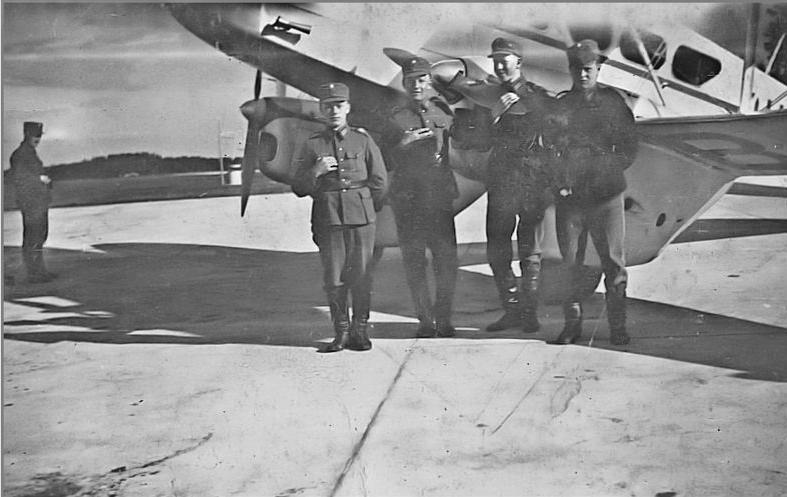
The Ilmavoimat Flight Test Team with the de Havilland DH.89, summer 1934. The test team considered the aircraft a useful and capable small transport aircraft, but it did not meet the stated requirements for the Ilmavoimat’s transport aircraft and was not considered further. However, while this aircraft type was not purchased for the Ilmavoimat, Veljekset Karhumäki Oy purchased six of these aircraft in 1936 with a state-guaranteed loan. The aircraft were used to service Government mail contracts, for scheduled passenger flights and for aerial mapmaking. During the Winter War, the DH.89’s were used for ongoing aerial mapmaking of areas captured from the USSR.
The Heinkel 111
In the early 1930s Ernst Heinkel decided to build the world’s fastest passenger plane, a goal met with scepticism by Germany’s aircraft industry and political leadership. Heinkel entrusted development to Siegfried and Walter Günter, both fairly new to the company and untested. In June 1933 Albert Kesselring visited Heinkel’s offices. Kesselring was head of the Luftwaffe Administration Office: at that point Germany did not have a State Aviation Ministry but only an aviation commissariat, the Luftfahrtkommissariat. Kesselring was hoping to build a new air force out of the Flying Corps being constructed in the Reichswehr ]and convinced Heinkel to move his factory from Warnemunde to Rostock and turn it over to mass production with a force of 3,000 employees who would produce the first He 111.
Heinkel began a new design for civil use in response to new American types that were appearing, the Lockheed 12, Boeing 247 and Douglas DC-2. The first single-engined Heinkel He 70 Blitz (“Lightning”) rolled off the line in 1932 and the type immediately started breaking records. In its normal four-passenger version its speed reached 380 km/h (230 mph), powered by a 447 kW (600 hp) BMW VI engine. The elliptical wing that the Günther brothers had already used in the Bäumer Sausewind sports plane before they joined Heinkel became a feature in this and many subsequent designs they developed. The design drew the interest of the Luftwaffe, which was looking for an aircraft with dual bomber/transport capabilities.
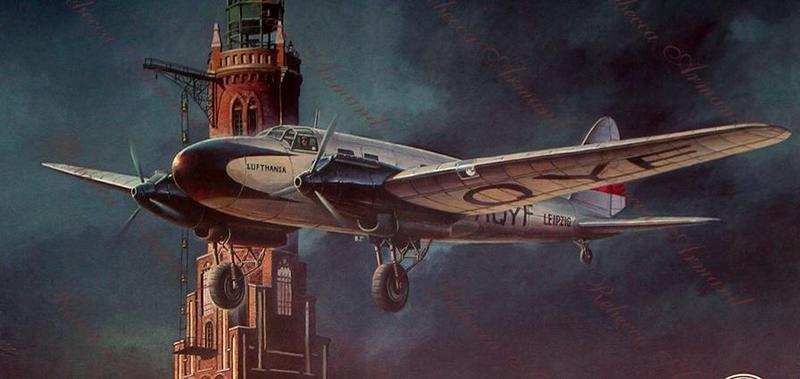
The He 111 was a twin-engine version of the Blitz, preserving the elliptical inverted gull wing, small rounded control surfaces and BMW engines, so that the new design was often called the Doppel-Blitz (“Double Blitz”).
Heinkel spent some 200,000 hours developing it. At the time the Ilmavoimat were evaluating transport aircraft, the Heinkel 111 was still in the design stage. Based on the bomber design, the aircraft was a wolf in sheeps clothing – as a civilian airliner it remained close to its military origins – while designed for ten passengers, the bomb bay remained as a four-seat “smoking compartment”, with another six seats behind it in the rear fuselage. The projected design had a speed of 193mph and a range of 621 to 1,367 miles depending on the fuel capacity. As such, while the speed and range were acceptable, the passenger / cargo capacity was somewhat limited and no further consideration was given to this type by the Ilmavoimat.
The 1934 Ilmavoimat Shortlist for Transport Aircraft Acquisition
After the first round of evaluations and testing was concluded, the Ilmavoimat shortlist consisted of the following:
- Junkers Ju52: Crew of 3, 17 passengers, maximum speed of 168mph, range of 590 miles, service ceiling of 18,000 feet.
- Caproni Ca 133: Crew of 4, 18 passengers, maximum speed of 196 mph, range of 838 miles, service ceiling of 18,000 feet;
- Savoia-Marchetti S.73: Crew of 4, 18 passengers, maximum speed of 210 mph, range of 620 miles, ceiling of 20,670 feet;
- Douglas DC2: Crew of 3-4 (military version, 14 passengers, maximum speed of 210mph, combat radius of 1,085 miles, service ceiling of 22,750 feet;
- However, the design for the Caproni Ca123 was also considered highly attractive. With a crew of 3, 28 passengers, maximum speed of 211mph, range of 932 miles and a service ceiling of 20,000 feet, it was priced at considerably less than the Douglas DC2 and looked very similar.
And the decision was…….
Based on a combination of cost, carrying capacity, handling, ease of maintenance and ability to operate from rough airfields, on balance, the Savoia-Marchetti S.73 emerged as the lead contender. The Ilmavoimat Procurement Team ordered 6 in July-1935 for use as transports. However, they also decided to hedge their options and based on the ability of Douglas to supply aircraft quickly, they ordered 2 Douglas DC2’s and 2 Caproni Ca123’s at the same time. While the Caproni Ca123 was a “paper” aircraft at the time of the order, the test flights and evaluations of the other two Caproni aircraft that were available had proved them to be well-designed and built.
However, the larger carrying capacity along with the good performance of the Ca123 appealed – the aircraft could carry an entire Platoon in one lift and so, 2 examples were ordered “on spec.” In Italy, the Finnish order, while not large, received a great deal of publicity, with the success of Italian aero-technology feted. Combined with the ever increasing build-up of Italian-Finnish trade through the 1930’s (and the links with the Finnish IKL political party covered earlier), this was heralded as the beginning of even closer ties between the two countries.
However, the first aircraft of this order to be delivered were actually the 2 Douglas DC2’s – ordered in July 1935, they were delivered “off the shelf” in September of the same year – a speed of delivery which gave rise to the Ilmavoimat taking a long and detailed look at American manufacturing capabilities. This ability of the Americans to delivery quickly and the large industrial capacity available within the USA would have ramifications over the remainder of the 1930’s as the Ilmavoimat considered alternative aircraft and looked at both availability and the ability to deliver.
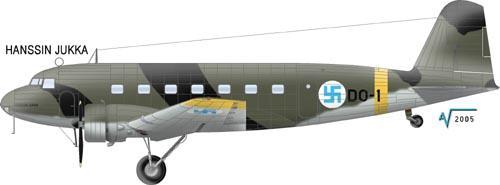
Ilmavoimat DC2 Hanssin Jukka – this DC2 became Marshal Mannerheim’s personal transport aircraft in the Winter War and was named after a famous Finnish knife fighter
The two Douglas DC2’s ordered were delivered in September 1935 With a crew of 2-3, plus capacity of 14 passengers, powered by 2× Wright Cyclone GR-F53 9-cylinder radial engines of 730 hp (540 kW) each giving a maximum speed of 210mph, a combat radius of 1,085 miles and a service ceiling of 22,750 feet, the DC2 was an effective light transport aircraft which the Ilmavoimat kept in service through the war years. With somewhat of a Finnish sense of humor, the first DC2 to enter service was named “Hanssin Jukka” after a famous Finnish knife-fighter, while the second was named “Isontalon Antti”.
Not wanting to be outshone by the Americans, and also seeing the prospect of further sales in the future, the Italians accelerated the delivery of the 6 Savoia-Marchetti S.73 aircraft by the simple expedient of redirecting 6 of the aircraft that were near completion and intended for Italian civil aviation use to meet the Finnish order instead. The aircraft were consequently delivered in October 1935.
The Caproni 123 was another story. The Finns had specified that a prototype would be built at the cost of the Italians and tested, with any faults rectified, before they would accept delivery of the 2 aircraft ordered. Caproni excelled themselves and built a single prototype in 6 months. Testing by an Ilmavoimat test crew took place over February-March 1936, with a number of faults rectified. The aircraft met or exceeded all expectations, and the 2 aircraft ordered were completed and delivery in June 1936. In fact, they looked remarkably similar to the Douglas DC2/DC3. In service, the Caproni Ca123 would proved to be a remarkably tough and versatile aircraft. The Ilmavoimat would go on to order more of these aircraft.
Previous Page (1933 Ilmavoimat Procurement Program)
Next Page (1935 Ilmavoimat Procurement Program)
Return to Table of Contents for “Punainen myrsky – valkoinen kuolema” (Red Storm, White Death)
 Copyright secured by Digiprove © 2013 Alternative Finland
Copyright secured by Digiprove © 2013 Alternative Finland


